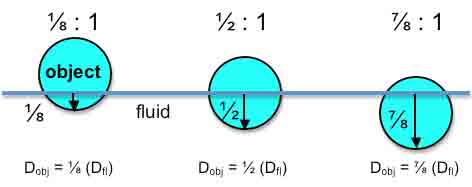Sink or Float Modeling
DEFINITIONS
density: mass per unit volume; density depends on how much stuff is crowded together in a given space
‘stuff’:particles of matter (occupies space and can be perceived by one or more senses)
buoyancy: the sinking, floating, or hovering of an object immersed in a fluid.
DENSITY IDEAS
1. Density depends on the material an object is made of; it does not depend on size
Same volume, different stuff: the one with more mass = higher density (the metal car is denser than the superball and the water because metal has more mass than the plastic in the superball and the H2O in the water).
2. If an object is made of more than one material, then combine the densities of all of the object's parts to get the total density.
total density = the sum of the densities of all of the parts of an object within the volume (densities should be multiplied by the proportion of each part of the total volume)
the flat piece of duplo sinks where as the stacked duplo (with air pockets in between) floats (density of duplo + density of air = lower density than just duplo) - this is why a ship floats on water.
3. Buoyancy (sinking or floating) depends on the density of the object relative to the density of the fluid in which it is immersed
if Densityobject < Densityfluid, then object will float (the superball floats because superaball’s density < water’s density)
if if Densityobject > Densityfluid, then object will will sink (the car sinks because car’s density > water’s density)
 4. For floating objects, the closer an object's density is to the fluid's density, the lower the object will float in the fluid.
4. For floating objects, the closer an object's density is to the fluid's density, the lower the object will float in the fluid.
--> or the bigger the difference in density between that of a floating object and the fluid, the higher the object will float.